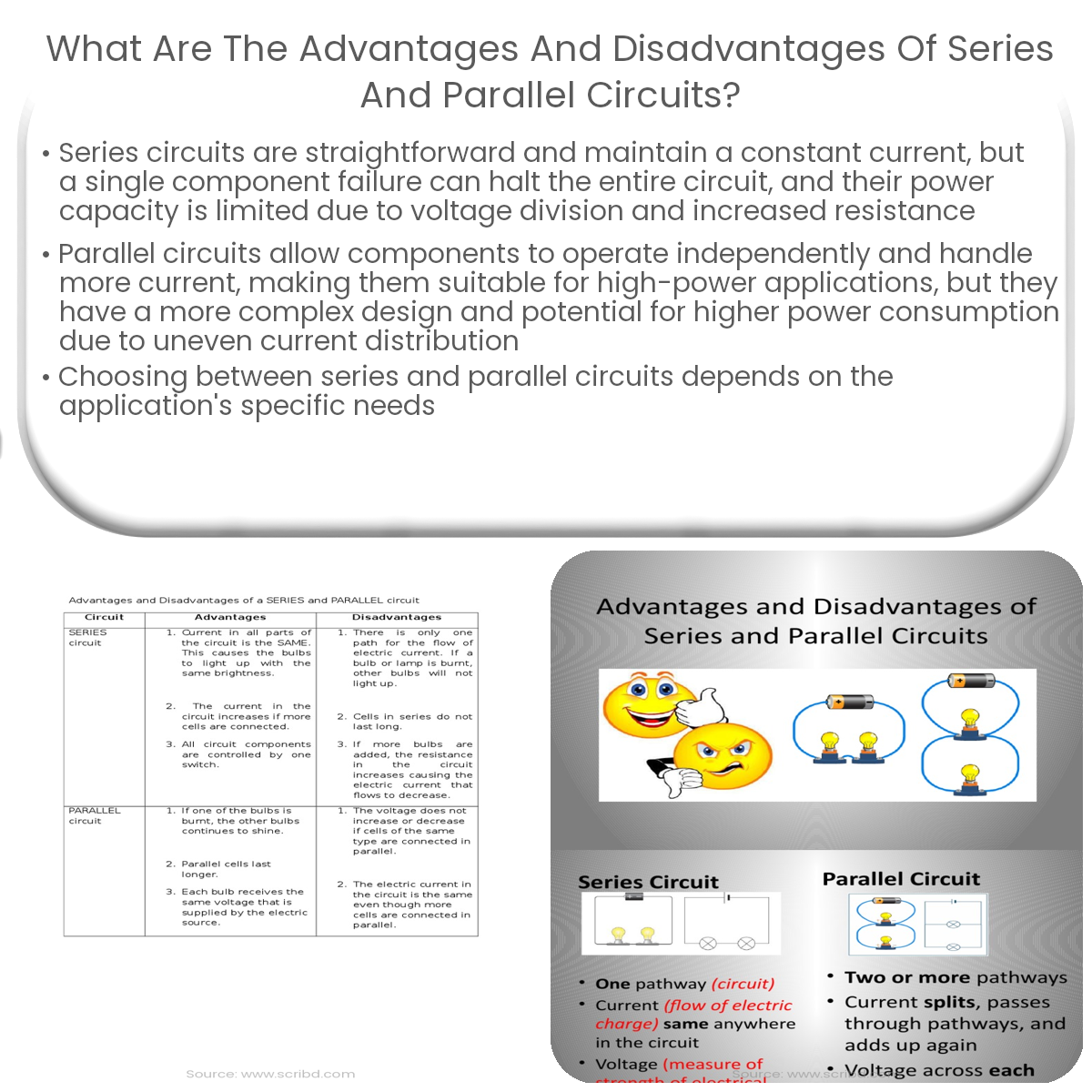Series circuits are simple with conserved current, while parallel circuits offer independent operation and increased power. Each has its pros and cons.
Series Circuits: Advantages and Disadvantages
Series circuits connect components end-to-end in a single path. The main advantages and disadvantages of series circuits are:
Advantages
- Simple design: Easy to set up and understand, with minimal components and connections.
- Current conservation: The same current flows through all components, simplifying calculations.
Disadvantages
- Dependency: Failure of one component affects the entire circuit, as current can’t bypass the failed component.
- Voltage division: The voltage source is divided among the components, limiting the voltage available to each.
- Less power capacity: Total resistance increases with added components, reducing the overall current capacity.
Parallel Circuits: Advantages and Disadvantages
Parallel circuits connect components in multiple paths, allowing current to flow through more than one route. The primary advantages and disadvantages of parallel circuits are:
Advantages
- Independent operation: Components function independently, so the failure of one doesn’t affect the others.
- Constant voltage: All components receive the full voltage from the source, improving performance.
- Increased power capacity: Parallel circuits handle more current, suitable for high-power applications.
Disadvantages
- Complex design: Parallel circuits are more complicated than series circuits, requiring more planning and design work.
- Current balancing: Uneven current distribution can cause overheating or overloading of individual components.
- Higher power consumption: Adding more components increases the total current, potentially leading to higher power consumption.
In conclusion, series circuits offer simplicity and current conservation but suffer from component dependency and limited power capacity. On the other hand, parallel circuits provide independent operation and increased power capacity at the cost of complexity and potential power consumption. The choice between series and parallel circuits depends on the specific requirements of the application.


